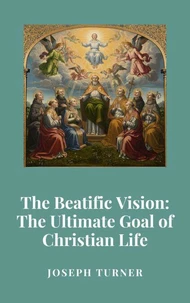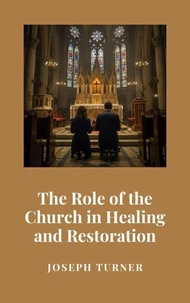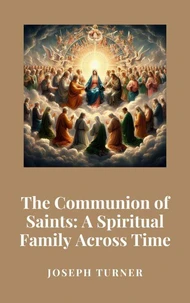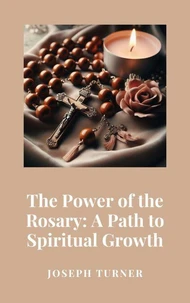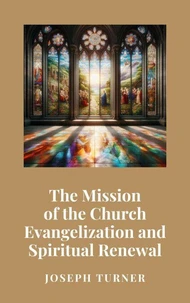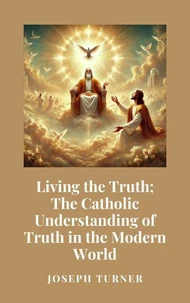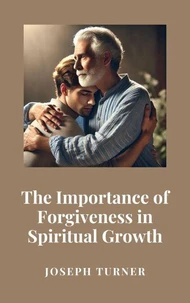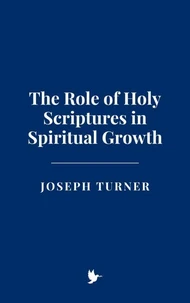Living the Christian Life in the World: Sanctifying the Ordinary
Par :Formats :
Disponible dans votre compte client Decitre ou Furet du Nord dès validation de votre commande. Le format ePub est :
- Compatible avec une lecture sur My Vivlio (smartphone, tablette, ordinateur)
- Compatible avec une lecture sur liseuses Vivlio
- Pour les liseuses autres que Vivlio, vous devez utiliser le logiciel Adobe Digital Edition. Non compatible avec la lecture sur les liseuses Kindle, Remarkable et Sony
 , qui est-ce ?
, qui est-ce ?Notre partenaire de plateforme de lecture numérique où vous retrouverez l'ensemble de vos ebooks gratuitement
Pour en savoir plus sur nos ebooks, consultez notre aide en ligne ici
- FormatePub
- ISBN8230077428
- EAN9798230077428
- Date de parution22/02/2025
- Protection num.pas de protection
- Infos supplémentairesepub
- ÉditeurIndependently Published
Résumé
The call to holiness is not reserved for monks, hermits, or those who retreat from the world into cloisters. Rather, it is a universal summons extended to every Christian, regardless of vocation, state of life, or profession. This idea, while deeply embedded in Christian tradition, found a particularly clear articulation in the Second Vatican Council's Lumen Gentium, which declared that "all the faithful, whatever their condition or state, are called by the Lord-each in his own way-to that perfect holiness whereby the Father Himself is perfect" (LG, 11).
This statement echoes the words of Christ in the Sermon on the Mount: "Be perfect, therefore, as your heavenly Father is perfect" (Matthew 5:48). However, the concept of sanctifying the ordinary is not merely a modern theological development. It has its roots in Sacred Scripture, the writings of the Church Fathers, the insights of the great Doctors of the Church, and centuries of Catholic tradition.
To understand how daily life can be a means of sanctification, one must first grasp the historical development of Christian holiness. In the earliest days of the Church, the first followers of Christ did not distinguish between secular and sacred life in the way that modernity often does. They understood that to follow Christ was to infuse every moment of their existence with His presence. The early Christian communities, as described in the Acts of the Apostles, lived in radical communion, sharing their goods, breaking bread together, and dedicating themselves to prayer (Acts 2:42-47).
They saw their faith not as something relegated to the synagogue or hidden away in private devotions, but as the very fabric of their daily existence. This holistic view of life was deeply rooted in the Jewish tradition, where even the most mundane aspects of daily living-eating, working, resting-were infused with religious significance through prayer and ritual.
This statement echoes the words of Christ in the Sermon on the Mount: "Be perfect, therefore, as your heavenly Father is perfect" (Matthew 5:48). However, the concept of sanctifying the ordinary is not merely a modern theological development. It has its roots in Sacred Scripture, the writings of the Church Fathers, the insights of the great Doctors of the Church, and centuries of Catholic tradition.
To understand how daily life can be a means of sanctification, one must first grasp the historical development of Christian holiness. In the earliest days of the Church, the first followers of Christ did not distinguish between secular and sacred life in the way that modernity often does. They understood that to follow Christ was to infuse every moment of their existence with His presence. The early Christian communities, as described in the Acts of the Apostles, lived in radical communion, sharing their goods, breaking bread together, and dedicating themselves to prayer (Acts 2:42-47).
They saw their faith not as something relegated to the synagogue or hidden away in private devotions, but as the very fabric of their daily existence. This holistic view of life was deeply rooted in the Jewish tradition, where even the most mundane aspects of daily living-eating, working, resting-were infused with religious significance through prayer and ritual.
The call to holiness is not reserved for monks, hermits, or those who retreat from the world into cloisters. Rather, it is a universal summons extended to every Christian, regardless of vocation, state of life, or profession. This idea, while deeply embedded in Christian tradition, found a particularly clear articulation in the Second Vatican Council's Lumen Gentium, which declared that "all the faithful, whatever their condition or state, are called by the Lord-each in his own way-to that perfect holiness whereby the Father Himself is perfect" (LG, 11).
This statement echoes the words of Christ in the Sermon on the Mount: "Be perfect, therefore, as your heavenly Father is perfect" (Matthew 5:48). However, the concept of sanctifying the ordinary is not merely a modern theological development. It has its roots in Sacred Scripture, the writings of the Church Fathers, the insights of the great Doctors of the Church, and centuries of Catholic tradition.
To understand how daily life can be a means of sanctification, one must first grasp the historical development of Christian holiness. In the earliest days of the Church, the first followers of Christ did not distinguish between secular and sacred life in the way that modernity often does. They understood that to follow Christ was to infuse every moment of their existence with His presence. The early Christian communities, as described in the Acts of the Apostles, lived in radical communion, sharing their goods, breaking bread together, and dedicating themselves to prayer (Acts 2:42-47).
They saw their faith not as something relegated to the synagogue or hidden away in private devotions, but as the very fabric of their daily existence. This holistic view of life was deeply rooted in the Jewish tradition, where even the most mundane aspects of daily living-eating, working, resting-were infused with religious significance through prayer and ritual.
This statement echoes the words of Christ in the Sermon on the Mount: "Be perfect, therefore, as your heavenly Father is perfect" (Matthew 5:48). However, the concept of sanctifying the ordinary is not merely a modern theological development. It has its roots in Sacred Scripture, the writings of the Church Fathers, the insights of the great Doctors of the Church, and centuries of Catholic tradition.
To understand how daily life can be a means of sanctification, one must first grasp the historical development of Christian holiness. In the earliest days of the Church, the first followers of Christ did not distinguish between secular and sacred life in the way that modernity often does. They understood that to follow Christ was to infuse every moment of their existence with His presence. The early Christian communities, as described in the Acts of the Apostles, lived in radical communion, sharing their goods, breaking bread together, and dedicating themselves to prayer (Acts 2:42-47).
They saw their faith not as something relegated to the synagogue or hidden away in private devotions, but as the very fabric of their daily existence. This holistic view of life was deeply rooted in the Jewish tradition, where even the most mundane aspects of daily living-eating, working, resting-were infused with religious significance through prayer and ritual.






